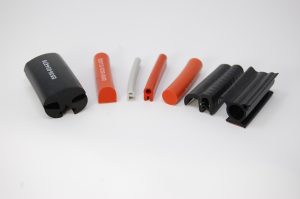Forecasting inventory levels can be challenging. In turn, that makes it hard to predict how much you’ll need to order and when you’ll need it delivered. In the past, you may have analyzed historical data when preparing forecasts. However, the global pandemic distorted demand and the supply chain crisis won’t end anytime soon. If neither 2020 nor 2021 were typical years for your company, what can you do to prepare for 2022?
Predicting Supply and Demand
In today’s highly competitive marketplace, companies of all sizes need to improve the accuracy of their forecasting. Whether you’re an original equipment manufacturer (OEM) or a supplier of parts or assemblies, you know that stockouts can stop assembly lines or cause you to lose customers. Today, buyers who have worked with the same vendors for years are searching for second sources. With inflation on this rise, “business as usual” is now anything but predictable.
Elasto Proxy, a rubber distributor and fabricator, can help you to reduce risks and control costs during these uncertain times. Manufacturers who share their sales forecasts and issue blanket purchase orders are already working with us to plan ahead. Elasto Proxy can buy everything that you need for your forecast period and then release low-to-medium volumes from our warehouses when you need them. You won’t have to pay for shipments until they arrive, and you can buy in lower minimum order quantities.
The first step involves your forecast. Most manufacturers use one of four methods, or a combination of these methods, to predict supply and demand.
- push systems
- pull systems
- sales-driven forecasts
- production-driven forecasts
Let’s take a look at each method and consider their advantages and disadvantages.
Push Inventory Systems
Push systems predict the amount of inventory you’ll need based on expected customer demand. These systems are ideal for established companies with greater cash reserves and more inventory storage space. With a push-based inventory system, you always keeps a large amount of inventory in stock. Because push systems require advanced purchasing, integration with a computer-based materials resource planning (MRP) system is helpful.
Pull Inventory Systems
Pull systems predict the amount of inventory that you’ll need based on what you’ve actually sold. These systems are ideal for smaller companies or less established businesses that are seeking to conserve cash flow and minimize storage space. With a pull-based inventory system, a company has lower upfront costs and storage requirements. Lower stock levels can lead to stock-outs, however, and there’s the risk of longer fulfillment times because of supply chain disruptions.
Sales Driven Forecasts
Sales-driven forecasts analyze what your sales team expects to close within a given time frame. This forecast period can be as short as 30 days or as a long as one year. Sales velocity, which measures how fast a deal moves through your sales pipeline, shapes the forecast and is itself a function of the number of leads, average deal value, conversation rate, and sales cycle length. The disadvantage of a sales-driven forecast is that it is difficult to plan production based on your sales team’s expectations.
Production-Driven Forecasts
Production-driven forecasts depend upon the assessments of your production department rather than your sales team. The advantage of this approach is that production knows how long various operations take to preform and the personnel and equipment that are required. The disadvantage is that production often lacks visibility into the sales funnel. Personnel may also be unaware of dynamic changes in market conditions that affect supply and demand.
Forecasting Your Future
At Elasto Proxy we’ve been encouraging our clients to take a fresh look at their next six months of requirements and then work to secure inventory now. Rising shipping costs and port delays are just part of what’s making inventory management a daily challenge. By taking a more proactive approach to forecasting, however, you reduce risks and control costs. If you send us your sales forecast and issue us a blanket P.O., we can integrate your forecast with our MRP system.










